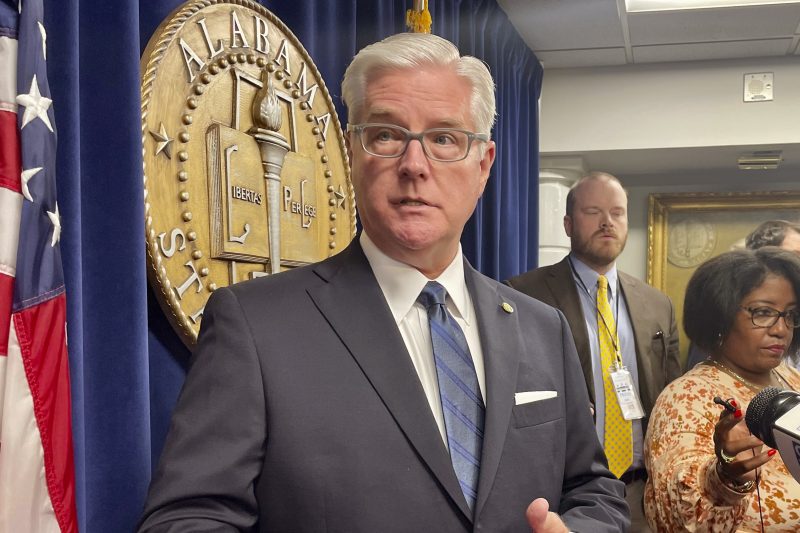The Republican-led legislature in Alabama approved a new congressional map on Friday that increases the percentage of Black voters in two of the state’s congressional districts. But a legal challenge to the map is already in the works, with Democrats saying the change is not enough to comply with a federal court order.
The new congressional map apportions the state’s 7th Congressional District to include a 50.65 percent Black population and draws its 2nd District to an area that has a 40 percent Black population. The Alabama Senate voted 24-6 to pass the new plan, and the House passed the map 75-28.
Gov. Kay Ivey (R) approved the map Friday evening, saying in a statement that the legislature “knows our state, our people and our districts better than the federal courts or activist groups, and I am pleased that they answered the call, remained focused and produced new districts ahead of the court deadline.”
The map is already expected to be challenged in court.
Legal Defense Fund attorney Ross Deuel represents plaintiffs in Allen v. Milligan, the case that sparked the redistricting effort. Deuel said Friday that the new map “fails to remedy the Voting Rights Act violation identified by the Supreme Court. Our clients will be returning to court to challenge it.”
Along with that pending legal challenge, a three-judge panel of a federal court that ordered the redrawing of the districts could reject the new map and draw up its own plan if it decides that legislators did not comply with the order.
During debate Friday, several Democrats questioned why the legislature was about to approve a map that is likely to be rejected by the three-judge panel.
“Do you like to gamble?” Rep. Phillip Ensler (D) pointedly asked Rep. Chris Pringle (R), the bill’s sponsor, claiming legislators had “crystal clear” instructions from the court.
“Again, I believe my plan complies with what the court asked us to do,” Pringle said. He argued that the new 2nd District “provides the opportunity” for a Black candidate to prevail. “If you have a candidate that is well-funded and well-organized … anyone can win it,” he said.
Democrats in both chambers also expressed frustrations over not being able to view the new map ahead of Friday’s votes and not being consulted during the process of drawing the new map.
“You just ignore us, throw something in our face and just say Black folks don’t need no vote in this state. That’s what you’re telling me,” Minority Leader Bobby D. Singleton (D) said ahead of the Senate’s vote. “‘We don’t care about your voice.’ That’s what it ultimately is … that only White men and White women should have a voice in this state. That is sad.”
The adoption of the new map comes after a 19-month legal battle over the representation of Black voters in Alabama’s congressional map. The state legislature assembled for a special session this week after a Supreme Court opinion in June that found legislators drew districts that unlawfully dilute the political power of its Black residents, in violation of the Voting Rights Act. While Black people make up about 27 percent of Alabama’s population, only one of the state’s seven districts is currently majority-Black.
The Supreme Court last month upheld the lower court’s order that Alabama needed to redraw the congressional map so it includes two districts in which “Black voters either comprise a voting-age majority or something quite close.”
The three-judge panel of the federal court, which includes two appointees of President Donald Trump, had given the legislature until Friday to come up with a new map.
Debate during the special session this week had in essence focused on the definition of “something quite close,” as mentioned by the court order. The two chambers produced two maps — a Senate version that would have increased representation of Black voters in the 2nd District from about 30 percent to 38 percent and a House version that increased Black voter representation in the district to 42 percent. A reconciled version of the congressional map was reached Friday by a panel of state legislators from both chambers, increasing representation of Black voters in the 2nd District to 40 percent.
Greg Reed (R), the Senate president pro tempore, said in a statement that the new map “is a fair solution that positions Alabama’s congressional districts and our voters in the best way possible.”
“While any special session of this nature comes with a lot of work and thoughtful discussions, we are here doing what we need to do to serve our great state and our people,” Reed said.
Former U.S. attorney general Eric H. Holder Jr., the chairman of the nonprofit National Democratic Redistricting Committee, said in a statement that the new map “arrogantly defies” the Supreme Court’s decision and that the map would make George Wallace, a segregationist Alabama governor, proud.
“With Section 2 of the Voting Rights Act still intact as a result of the Supreme Court’s recent decision, we must again look to the federal courts to hold the Alabama legislature to account,” Holder added.

